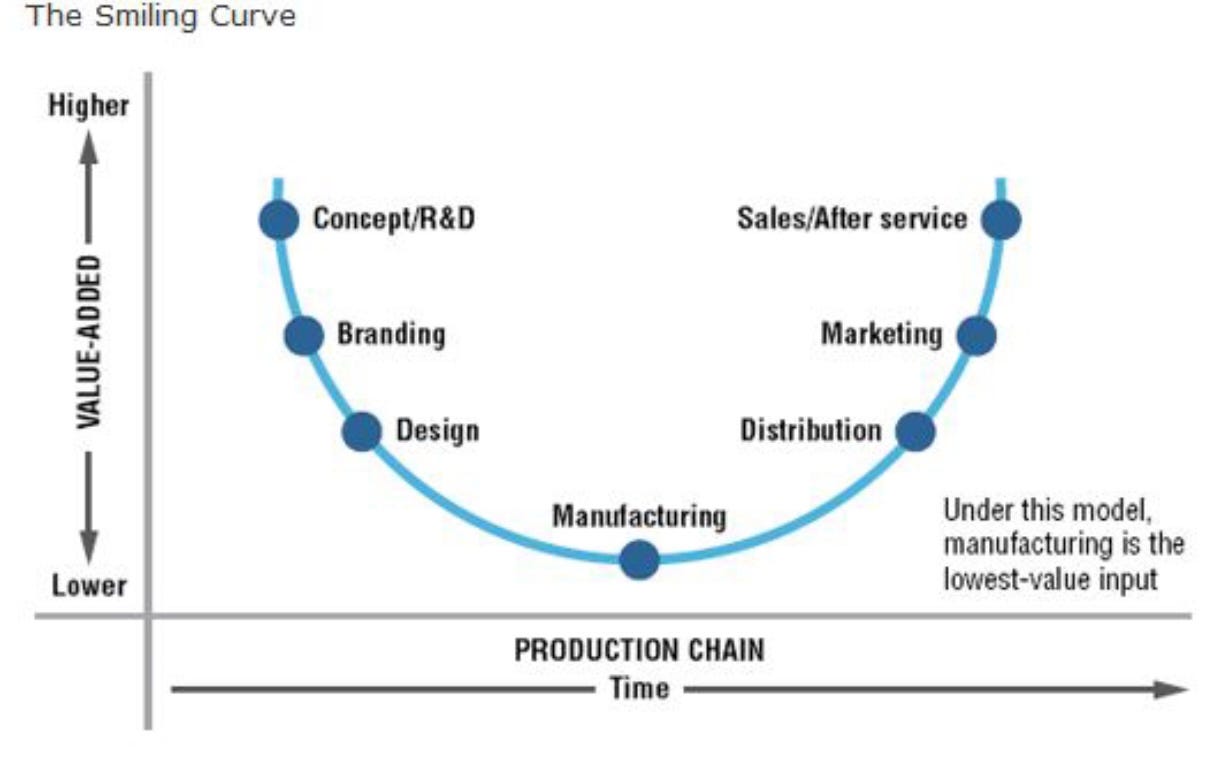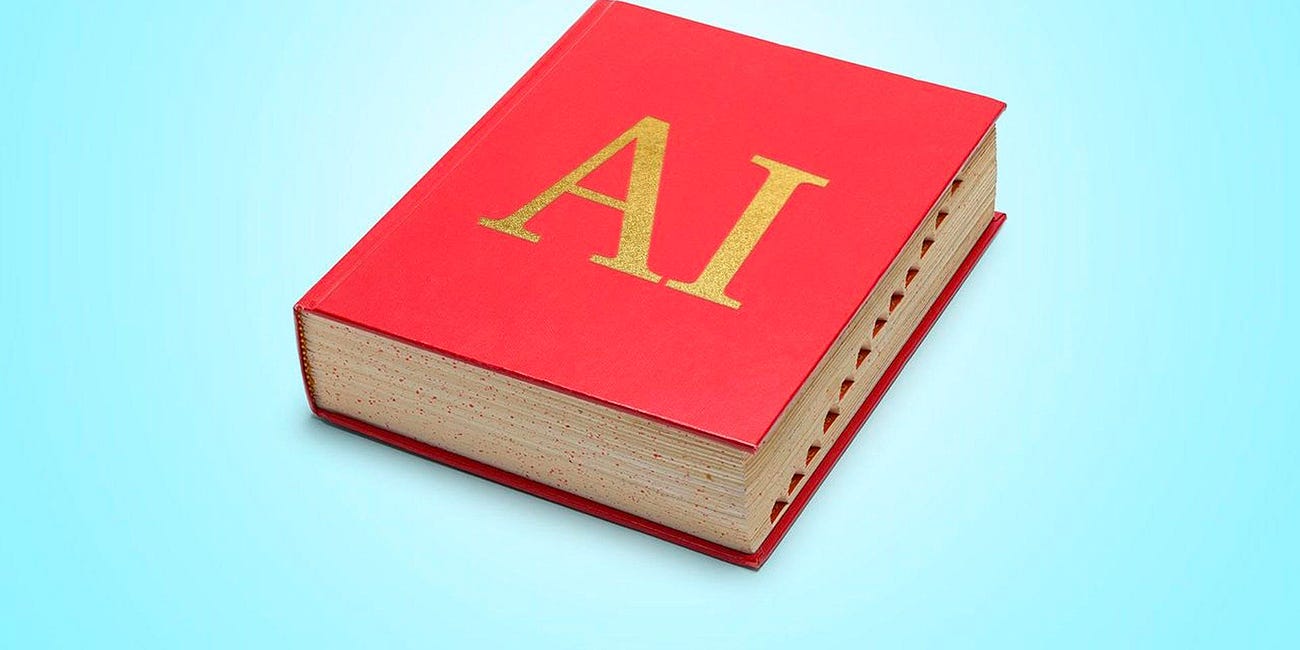Designed by Humans, Deployed by Chimeras
A Field Guide to Orchestrating Work You’ll Never Touch
It is not the strongest of the species that survive, nor the most intelligent, but the one most responsive to change. —Charles Darwin
Above: Nature finds a way, no matter in the ocean or the office park.
The Tiny Li(n)e on the Back of Your iPhone
Flip your iPhone over.1
In small type you’ll find the quiet boast: “Designed by Apple in California.” It’s a love letter to taste, not torque. The real torque, of course, happens 7,000 miles away on a Foxconn line where over a million people bolt dreams onto aluminum shells.
In Apple-speak, the profit hugs the two bright ends of Stan Shih’s “smiling curve” (i.e. upstream in brand and design and downstream in marketing and services) while the overtime slumps in the middle, down on the assembly line.
It’s just so turns out that this division is about to swallow knowledge work whole.
Remembrance of Tasks Past
Instead of AI killing 30% of the jobs, which would be catastrophic and terrible, AI is killing 30% of your job, which is actually an amazing time saver...it's empowering people more than replacing people, at least so far. —Vitalik Buterin
Prompts Are the New Production Lines
A prompt isn’t typing; it’s compiled judgment. All the tradecraft you once learned by pantomiming as an Excel monkey is now squeezed into a single system message. When those internal prompts leak, developers go feral because the leak exposes the real IP: workflow distilled into text.
In a sentence, English is the new programming language.
Investor Brittany Walker calls this shift “expertise as software.” In her well-written piece, she sketches a world where UI defaults nudge novices down the same golden path a 10x operator would take.
The value migrates from who pulls the lever to who authors the lever’s logic. Once again, brain beats brawn.
Centaurs, Cyborgs, and Something Else Entirely
Ethan Mollick provides the Rosetta Stone here. In Co-Intelligence, he writes:
Centaur work has a clear line between person and machine, like the clear line between the human torso and horse body of the mythical centaur. It depends on a strategic division of labor, switching between Al and human tasks, allocating responsibilities based on the strengths and capabilities of each entity…Cyborgs blend machine and person, integrating the two deeply. Cyborgs don't just delegate tasks; they intertwine their efforts with Al, moving back and forth over the Jagged Frontier. Bits of tasks get handed to the Al, such as initiating a sentence for the Al to complete, so that Cyborgs find themselves working in tandem with the Al. This book could not have been written, at least in the form you have it today, without both Cyborg and Centaur Tasks.
Mollick’s earlier essay backs the data: “Consultants using AI finished 12.2% more tasks on average, completed tasks 25.1% more quickly, and produced 40% higher quality results than those without.”
But Centaurs and Cyborgs still treat AI as a buddy cop. What’s next is the Chimera: many agents, each autonomous, stitched into a single cloud organism that executes everything, everywhere, all at once while you steer from a cockpit of taste and hard-won discernment.
Designed by Humans, Manufactured by Chimeras
Think of the Chimera model as “Designed by Tom in Notion, Manufactured by GPTom.” You supply:
Taste: the hard-won, non-synthetic signal about what should exist
Direction: the prompt-as-protocol that routes tasks to subordinate agents
Nerve: the willingness to believe before others understand and ship before consensus forms
Everything else—edits, A/B tests, pull requests—rolls off an invisible Foxconn of silicon labor housed in data centers that are as long as they are wide.
Anton Osika, building what he cheekily calls “the last piece of software” with Lovable, is already there: “We’re going to reach a point where 99 % of software is created by a human — but with an AI.”
This is vital to understand because:
The bottleneck flips from “Can we build it” to “Do we dare imagine it”
Career moats narrow to taste, originality, and the courage to prompt first
Organizations become choreography. A single strategist can marshal fleets of agents the way Apple marshals 43 countries of suppliers
In other words, the gap between imagination and execution just disappeared; now the only limit is nerve. Those who build at the speed of thought will be the victors who write history.
The Top Gun Theory Redux
Months ago, I argued that AI turns every knowledge worker into Maverick flying a plane that can out-think the pilot.
The Top Gun Theory of AI: When Maverick Becomes a Machine
Change, but start slowly, because direction is more important than speed. —Paulo Coelho
Chimeras take that further: you’re now the aircraft carrier, launching entire squadrons of autonomous jets. Your job is no longer dogfighting; it’s mission design.
A Bullet-by-Bullet Playbook for Monday Morning
Write a memo
Centaur: Draft the core ideas yourself, then let AI proofread and polish
Cyborg: Co-write in real time, you type a sentence, the model suggests the next
Chimera: Give an agent the objective (“one-page brief for the board”) and review the finished PDF it emails back
Launch a campaign
Centaur: Map the plan; let AI generate ad variants and subject-line tests
Cyborg: Brainstorm copy together inside the doc; AI refines targeting on the fly
Chimera: Spin up an agent chain that writes ads, allocates budget, buys media, and auto-runs A/B tests—then reports the winners.
Build software
Centaur: Outline the spec by hand, have AI fill boilerplate code
Cyborg: Pair-program—you write tricky logic, AI handles repetitive scaffolding
Chimera: Describe the feature in plain English; an agent delivers a deploy-ready PR and unit tests.
No matter where you are, start by documenting your taste now. The clearer your dogma, doctrine, discernment, et al, the more faithfully the swarm will execute. Prompts are contracts; write them like lawyers—mutually exclusive and collectively exhaustive.
Apple captured ~40-60% of an iPhone’s gross margin with five words and a California zip code.
In the Chimera era, well-aimed prompts will do the same for your output. The machines are standing by for your instructions; originality is waiting for your courage.
So flip the phone over, read the fine print, and remember: the back of your device is a fax from the future of work.
Design boldly; no assembly required.
Per my about page, White Noise is a work of experimentation. I view it as a sort of thinking aloud, a stress testing of my nascent ideas. Through it, I hope to sharpen my opinions against the whetstone of other people’s feedback, commentary, and input.
If you want to discuss any of the ideas or musings mentioned above or have any books, papers, or links that you think would be interesting to share on a future edition of White Noise, please reach out to me by replying to this email or following me on Twitter X.
With sincere gratitude,
Tom
Perplexity estimates there’s a 37% chance you just read this on an Apple device, which feels poetically on-brand.








I think it's too soon to render predictions about the future of AI.
Between the ever-present hallucinations and absence of discernment in its output...even simple searches yield inconsistent results, often with single-source dependencies of dubious quality.
Then there's the issue of massive operational costs (OpenAI is burning through billions), environmental consequences, and degeneration (as training sets increasingly include AI output and AIs are used to train one another).
Assuming these issues will sort themselves out is a byproduct of a uniquely human optimism...but look where our unfettered belief in technology has led...omnipresent disinformation, deep fakes, decimated democracies, a deep erosion in trust for expertise, and corporate CEOs so eager to replace humans with AI that the first waves of massive layoffs have already begun.
I'm not averse to new technologies, but I'd like to see far more humility by its developers and marketers, and far more skepticism by consumers and adopters.